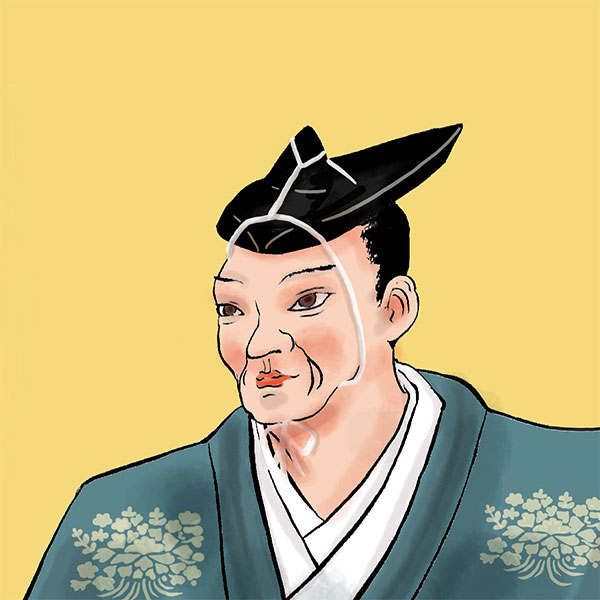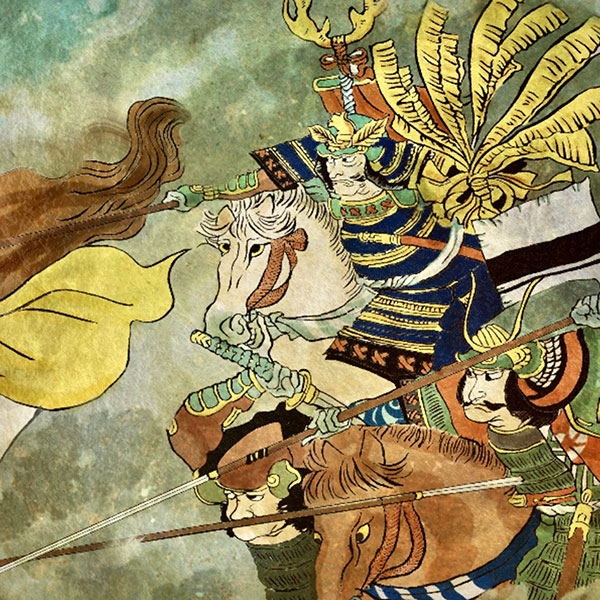Hisashi Matsunaga (2/2)A man who rose through the ranks through his ability

Hisashi Matsunaga
- Article category
- biography
- name
- Hisashi Matsunaga (1508-1577)
- place of birth
- Osaka Prefecture
- Related castles

Shigiyama Castle

Tamon Castle
- related incident
Most of the powerful Japanese in Yamato followed Junkei Tsutsui, but in October Nobunaga sent 20,000 troops to Yamato, including his vassals Nobumori Sakuma, Fujitaka Hosokawa, and Koremasa Wada, as reinforcements for Hisahide. We will continue to pacify the situation.
After things had calmed down on December 24th, he went to Gifu and presented various other famous items, including the ``Fudokuniyuki Sword.'' In 1569, the Yamato pacification continued, while Junkei fell into decline.
In 1570, he participated in Nobunaga's subjugation of Yoshikage Asakura along with Yoshitsugu and Katsumasa Ikeda, and when Nobunaga was forced to retreat due to the rebellion of his sister-in-law Nagamasa Asai, he persuaded Mototsuna Kuchiki, the lord of Kuchikidani in Omi Province. He became an ally and saved Nobunaga from a difficult situation (Battle of Kanegasaki).
After that, he participated in the attack on Ishiyama Honganji Temple as a de facto vassal of Nobunaga, but Hisahide and Yoshiaki gradually became more and more at odds with each other, and at the same time, the relationship with Nobunaga, who supported Yoshiaki, deteriorated.
In the 3rd year of Genki (1572), Hisahide and Yoshitsugu tried to recruit Hosokawa Akimoto, Hatakeyama Akitaka, Yusa Shinnobu, Itami Chikaoki, and Wada Korinaga (Koremasa's son) to their side, but Yoshiaki's efforts led them to join them. He did not respond, and was only able to make Tamezo Miyoshi his ally.
However, Hisahide and others were successful in reuniting Miyoshi's forces, but as they approached anti-Nobunaga forces such as Asakura Yoshikage, Takeda Shingen, and Honganji Temple, and as the relationship between Yoshiaki and Nobunaga deteriorated, they became anti-Nobunaga. Here we go (Nobunaga's siege network). The following year, in February 1573, Yoshiaki broke with Nobunaga and raised an army, and Yoshiaki, Hisahide, and Yoshitsugu officially made peace.
However, in April of the 4th year of the Genki era, Shingen, a powerful member of the siege network, died of illness during the Nishigami operation, and the Takeda clan withdrew. In July, Yoshiaki Ashikaga was defeated and exiled by Nobunaga (Battle of Makishima Castle), and in November, Yoshitsugu Miyoshi was attacked and defeated by Nobunaga's general, Nobumori Sakuma (Battle of Wakae Castle), and the anti-Nobunaga network was defeated. Ta. At the end of December, Tamonyama Castle was besieged by the Oda army, which had advanced in strength, and surrendered, surrendering Tamonyama Castle to Nobunaga. The Sanninshu were also defeated by Nobunaga and destroyed, and the siege network collapsed. The following year, in January 1574, he had an audience with Nobunaga in Gifu, and Junkei Tsutsui also became subordinate to Nobunaga.
Hisahide's end
In 1577, in conjunction with anti-Nobunaga forces such as Uesugi Kenshin, Mori Terumoto, and Ishiyama Hongan-ji Temple, he voluntarily withdrew from the attack on Hongan-ji Temple.
Disobeying Nobunaga's orders, he barricaded himself in Shigiyama Castle and once again made his stance on confrontation clear. It is said that Nobunaga sent Yukan Matsui to ask about the reason, but he did not even bother to meet the messenger.
Nobunaga sent a large army led by his eldest son Nobutada Oda as the commander-in-chief and the Tsutsui forces as the main force, and in October they besieged Shigiyama Castle. Nobumori Sakuma demanded that the famous Kotenmei Heiragumo be taken out of the castle, and Hisahide said, ``The Tairagumo's cauldron and our head are two weapons that I do not intend to show to Lord Nobunaga, and that they are gunpowder. I will destroy it to pieces,'' he is said to have replied.
Due to an attack by the Oda army, Hisahide committed suicide on October 10 by smashing the Hiragumo and setting the castle tower on fire. The head was sent to Azuchi, and the body was buried at Daruma-ji Temple by Junkei Tsutsui. He passed away at the age of 68 (some say 70 years old).
It is said that the soldiers rumored that this was a divine punishment from the Kasuga Myojin Shrine, as it happened on the same day of the same month as the day when the Great Buddha Hall of Todaiji Temple was burnt down 10 years earlier.
Hisahide's anecdote
- Hisahide as a tea master
- He studied under Takeno Joo, and had a wide range of contacts as tea masters. He is famous for possessing the Kotenmeihei spider, but he is also famous for possessing many other specialties, such as the Kujuku-haired Nasu (a nine-haired eggplant).
His status as a tea master was high at the time, and the Nomura Museum of Art has a tea scoop called ``Tamatsubaki'' that Hisahide himself created on January 22, 1573.
He and Oda Nobunaga were lovers of the same tea ceremony, and when he was invited by Nobunaga to have tea with him, Nobunaga told him, ``Please continue to pray in the 99-haired tea bowl in front of you forever.'' It is said that Hisahide also renewed his sukiya shop, perhaps to repay the favor.
On the other hand, Nobunaga, who saw Tokugawa Ieyasu meeting Hisahide and exchanging polite greetings, remarked that there was no need to be polite, saying, ``He is not a man I can forgive for an act that goes against the Way of Heaven.'' It is said that. - The habit of administering moxibustion
- It is said that he would apply moxibustion to the top of his head at a set time every day to prevent paralysis.
Just before he committed suicide, he ordered the preparation of moxibustion, and his subordinate told him, ``There will be no cure for this period,'' but Hisahide replied, ``People who see moxibustion at Hyakue (Brain Ten) are not prepared for any purpose. You may think that is strange.However, I always worry about paralysis.When I suddenly get paralyzed and my whole body stops moving when I am about to die, people laugh at me and think that it must be because I am afraid of death. His valor would be all for nothing. Hyakue said, ``If I were to use moxibustion for the paralytic, it would prevent the disease for the time being and allow me to kill myself willingly.'' It is said that he committed suicide after having the moxibustion applied. .
It is speculated that Hisahide wanted to be a military commander who could successfully commit suicide even in his old age.
“Heguri Jidai Festival” to celebrate Hisahide
A major spring event is held at the roadside station Kumagashi Station, centering around a historical parade of great historical figures associated with Heigun Town in Nara Prefecture who parade through the town.
It is a popular event that is enjoyed by local residents, from planning to participation. It was launched on the occasion of the 1300th anniversary of the transfer of the capital to Heijo, and has been carried out continuously. Held every year on the last week of April, a public holiday.
Starting with Yamato Takeru no Mikoto, in order from ancient times, Heguri-no-zuku, Prince Shotoku, Ennogyoja, King Nagaya and Imperial Prince Kibinai, and Hirotari Tairagun (Wai dance that is said to have served King Nagaya) A splendid procession will be held, followed by Gyoki Bosatsu (a master of the 19th century), followed by Sengoku military commanders Hisashi Matsunaga and Sakon Shima (Kiyooki).
Reread the article by Hisashi Matsunaga
- related incident

- WriterTomoyo Hazuki(Writer)I have loved history and geography since my student days, and have enjoyed visiting historical sites, temples and shrines, and researching ancient documents. He is especially strong in medieval Japanese history and European history in world history, and has read a wide range of things, including primary sources and historical entertainment novels. There are so many favorite military commanders and castles that I can't name them, but I especially like Hisashi Matsunaga and Mitsuhide Akechi, and when it comes to castles, I like Hikone Castle and Fushimi Castle. Once you start talking about the lives of warlords and the history of castles, there's a side of you that can't stop talking about them.





